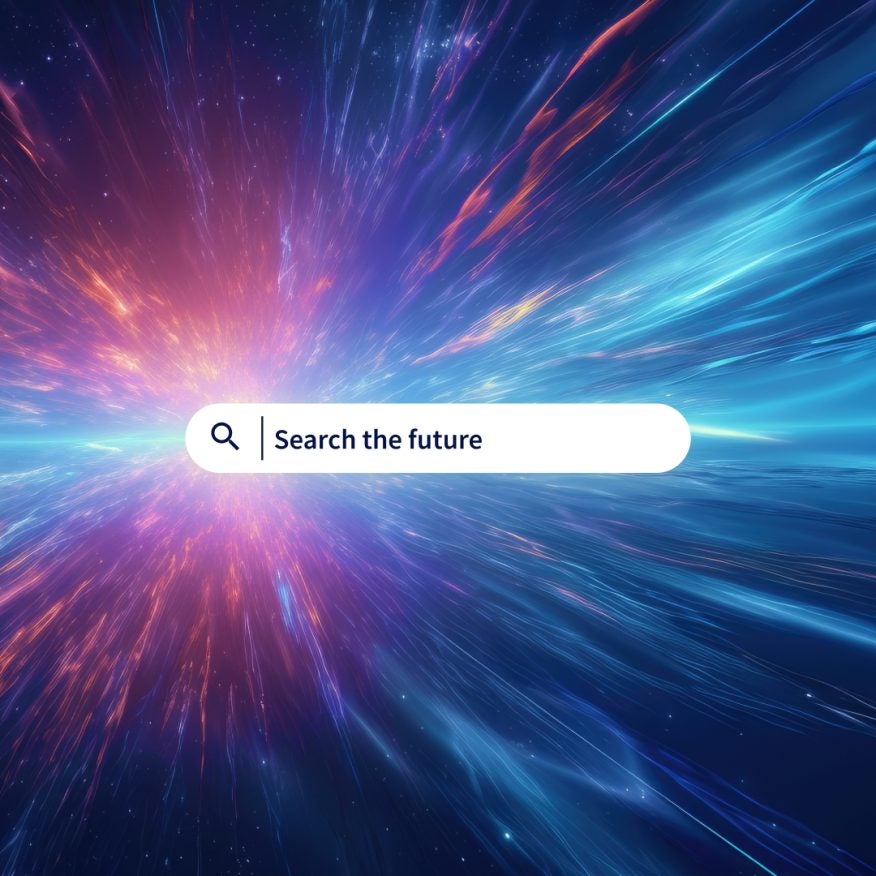The evolution of Google Search.
In our time spent online, Google has always been the middleman—a bridge between people asking questions and websites providing answers. For digital marketers, the goal of modern SEO is to work with Google, providing the best answers to relevant user queries. And the reward? Attracting hordes of website users, boosting traffic, and, ideally, turning clicks into customers.
But what happens when Google goes direct-to-consumer? Instead of leading users to your website, they provide AI-generated answers directly on their search results page. If AI is doing the heavy lifting, will websites and blogs still have a place online?
In this post, we’ll look back at the evolution of Google Search. We’ll chat about Chat GPT and artificial intelligence and how generative AI is having its moment. We’ll dive into the integration of chatbots into search engines and end with some thoughts on what this could mean for website traffic in the future.
Google’s transition from a basic search engine to an omnipresent information source has been a remarkable, AI-driven journey.
Starting with PageRank, its pioneering algorithm introduced in the late 1990s, Google quickly became synonymous with search (Ask Jeeves, who?). This system ranked web pages based on relevance and popularity, laying the groundwork for highly efficient search results.
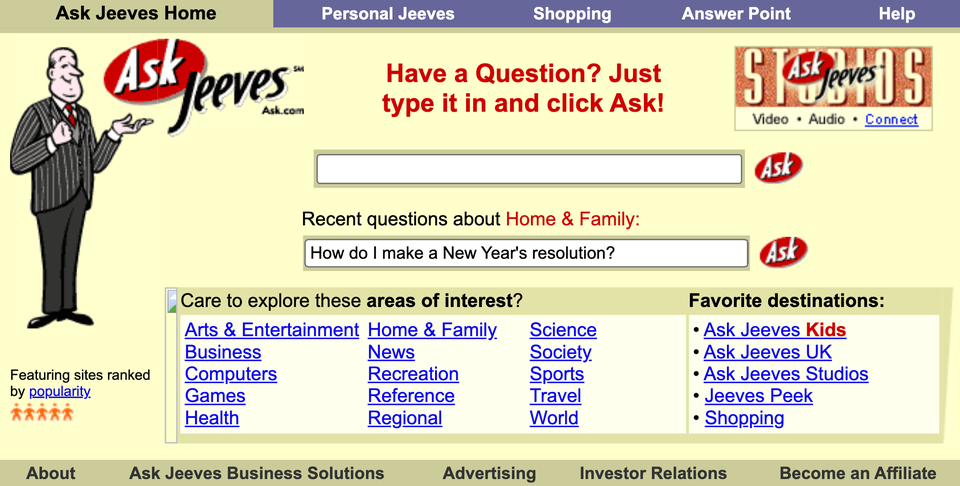
Smaller updates were introduced until a pivotal shift in 2012, with the introduction of the Knowledge Graph. This allowed users to obtain instant answers to queries presented directly on the search results page. Though it bypassed the need for users to visit specific websites, unlike generative AI, results were still pulled in directly and dependent on external website copy.
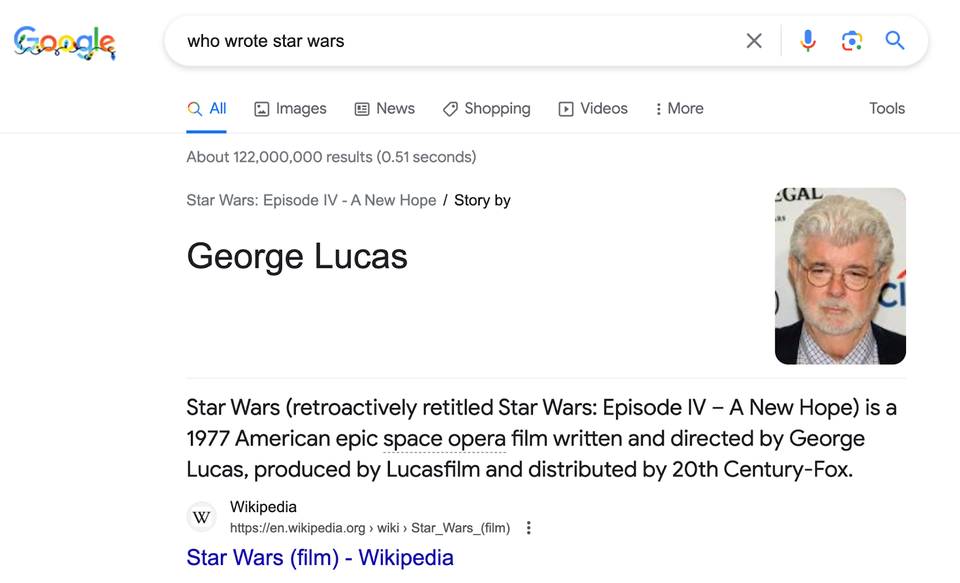
RankBrain’s integration in 2015 was another pivotal moment, where AI and machine learning were leveraged to comprehend the context behind queries, improving search relevance. These steps transformed Google Search from a keyword-driven lookup tool to an intuitive guide through the expanse of information online.
So it’s important to remember that while AI is buzzworthy, it’s not new to Search. This evolution has been a stepwise process through countless algorithm updates. And while generative AI presents some uncertainty for webmasters, Google continues to move towards the same target—an efficient and seamless user experience.
The next iteration of search.
Google has become an expert at predicting what users are looking for, crawling unthinkable amounts of data to find it, and delivering the best solutions – all in what seems like an instant. However, as a business, there’s a significant risk in sending users away from their platform. Google makes a lot of money from advertising, and it’s in its best interest to keep users returning and increasing their time on search engine results pages (SERPs).
Knowledge Graph was a first-step solution that kept users on-site, pulling answers from websites directly into search results. It also facilitated voice search, providing solutions to users in the most convenient way possible.
However, those solutions still relied on other websites and sourcing information externally – the next step was moving in-house. Doing so opens up a new horizon for search, and it comes in the form of Generative AI.
Generative AI: making something from nothing.
Generative AI is a category of artificial intelligence that focuses on creating or generating new content, data, or information rather than just analyzing or processing existing information. It can produce original content, such as images, text, audio, or videos, resembling human-created content.
These AI models, often based on deep learning techniques like neural networks, are trained on vast datasets to learn patterns, correlations, and structures within the data. Generative AI models can generate new content by predicting and synthesizing information based on the patterns learned during training.
Open AI & ChatGPT
One popular example of generative AI is OpenAI’s GPT (Generative Pre-trained Transformer) series, including models like GPT-3. These models can generate human-like text based on prompts, demonstrating the ability to create coherent and contextually relevant content.
Generative AI has applications in almost every field, including natural language processing, content creation, image synthesis, and drug discovery. Its ability to create new content has sparked interest and innovation in diverse industries, pushing the boundaries of what AI can achieve in creative and problem-solving domains.
Who’s using it?
OpenAI released the GPT-3 API for public access in June 2020, making it available for developers and organizations for various applications. The popularity of Chat GPT and the GPT-3 API grew steadily following its release, with developers, researchers, and enterprises exploring its functionalities and integrating it into a wide array of platforms.
While already available for a few years, 2023 saw a rapid increase in search interest for the platform. This can be attributed to a few factors: availability in more countries, increased integration, and refinement. Changing the online landscape as we know it, a better question might be, “Who’s not using ChatGPT?”. Looking at Google Trends, we can see a growing search interest over the past 12 months.
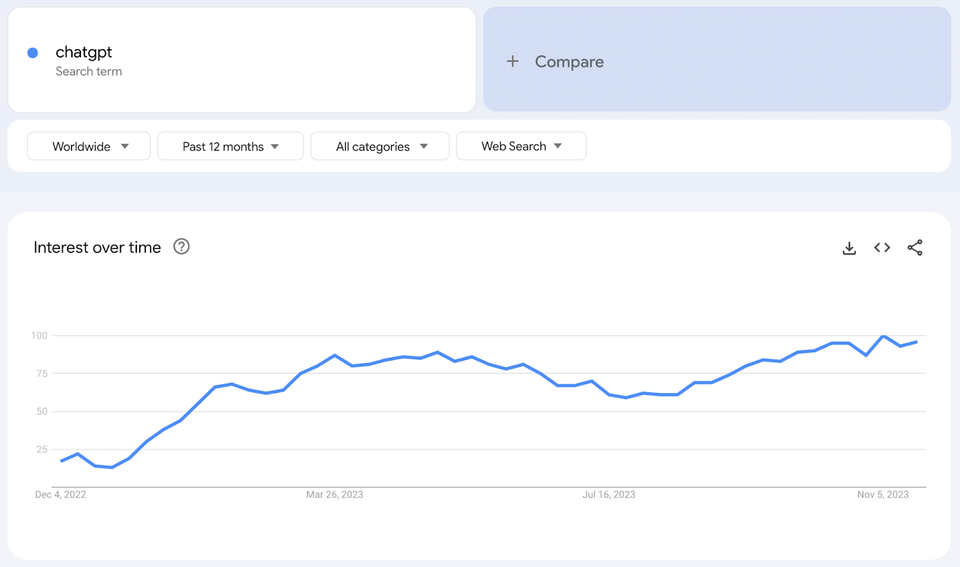
Narrowing in on the last 3 months, it’s interesting that search interest in ChatGPT is cyclic, consistently dropping on weekends and peaking mid-week. This highlights that many users are incorporating this technology into their workflows.
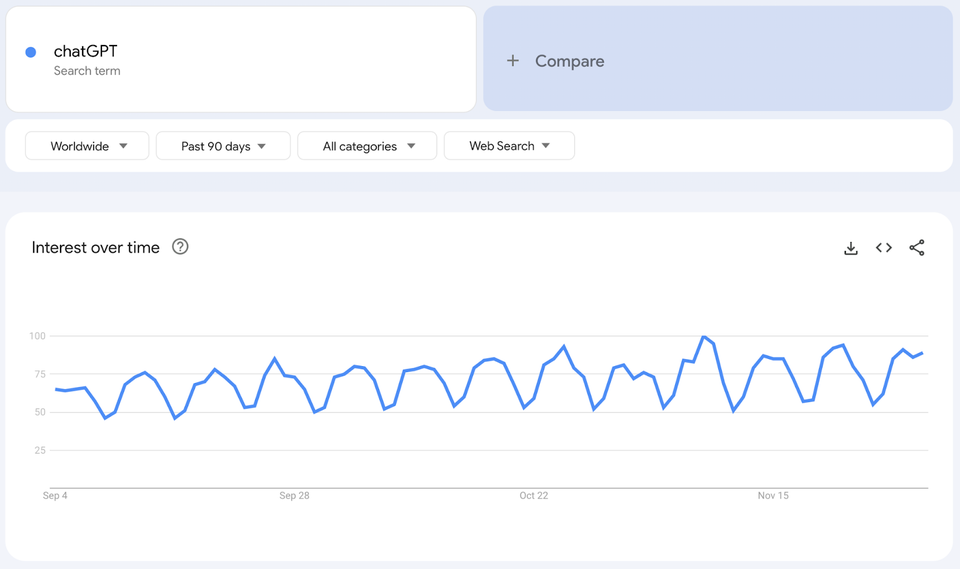
How are they accessing it?
Early access to Chat GPT or the GPT-3 API was primarily available to developers, researchers, and businesses through OpenAI’s platform. This access typically required applying for API access, which involved a process of registration on OpenAI’s website.
OpenAI released an early demo of ChatGPT for public use in late November 2022. According to Forbes, “The chatbot quickly went viral on social media as users shared examples of what it could do. Stories and samples included everything from travel planning to writing fables and computer programming. Within five days, the chatbot had attracted over one million users.”
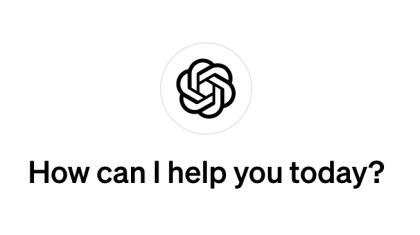
Today, most users access the chatbot by visiting chat.openai.com or through the ChatGPT App—both of which require signing up for a free account. This provides access to GPT-3, or users can upgrade to the Plus version (GPT-4), which offers advanced access for $20/month.
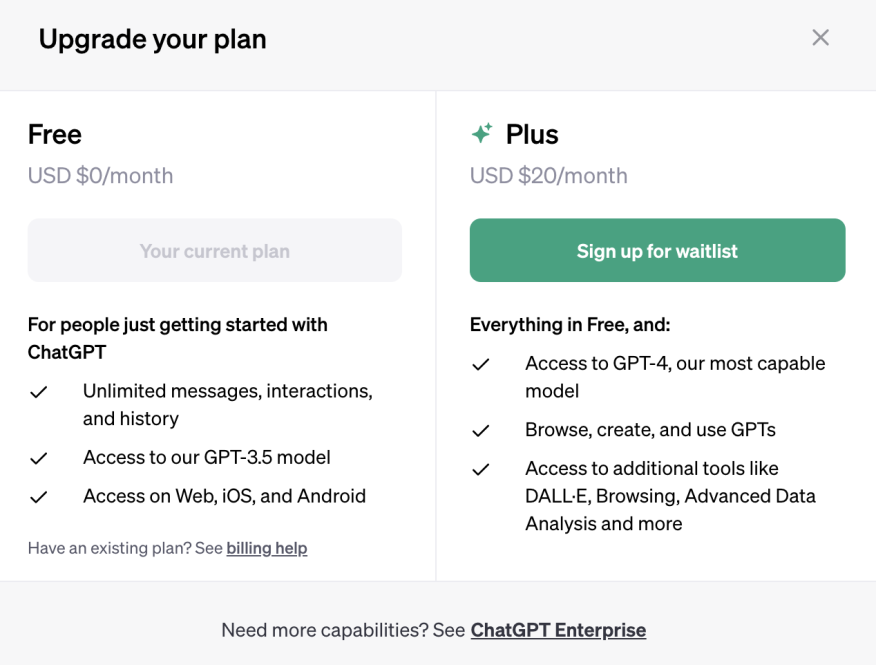
As separate entities, ChatGPT acts as a direct competitor to search engines. Seeing the potential, the goal quickly became integration. And in a surprising turn of events, a lesser-known underdog beat Google to the punch.
Bing’s launches Bing Chat, powered by GPT-4
In February 2023, Microsoft’s Bing unveiled its new, AI-powered search engine. Using GPT-4, the latest iteration of GPT from OpenAI, searchers are prompted to use Bing Chat to get concise, AI-generated responses.
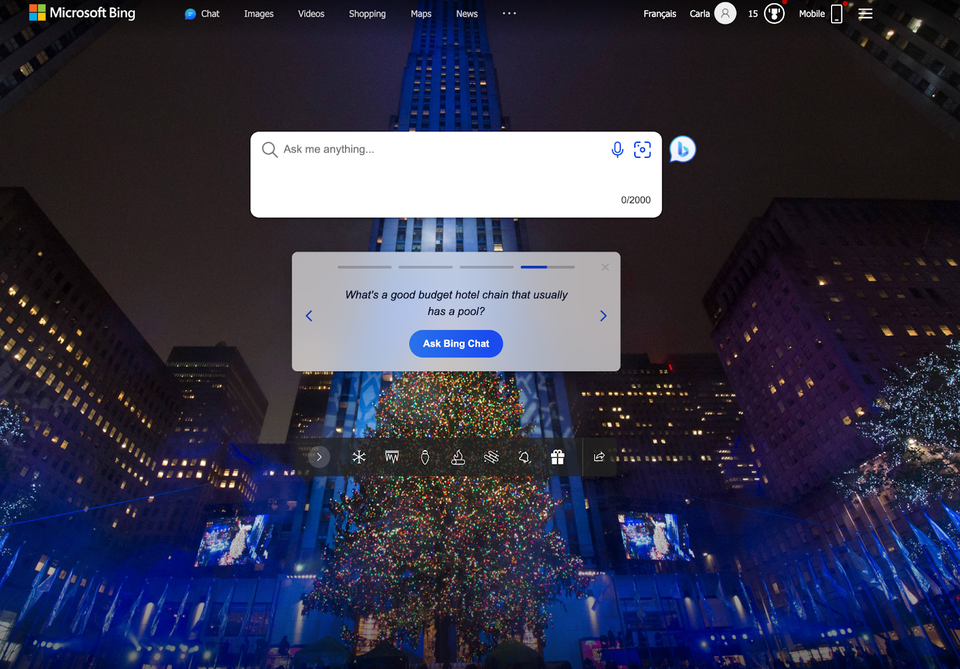
After Microsoft invested over $13 billion in OpenAI, a slowly declining platform became a real contender in the search engine space. In addition to Bing search, Microsoft integrates this technology into its sales and marketing software, GitHub coding tools, Azure cloud and Microsoft 365 productivity bundle.
With Bing page visits increasing by 15.8% since the launch, this integration has been hugely successful. We’ve also seen a significant rise in the value of Microsoft stock, climbing to an all-time high this December after the proposed hiring of OpenAI’s CEO.
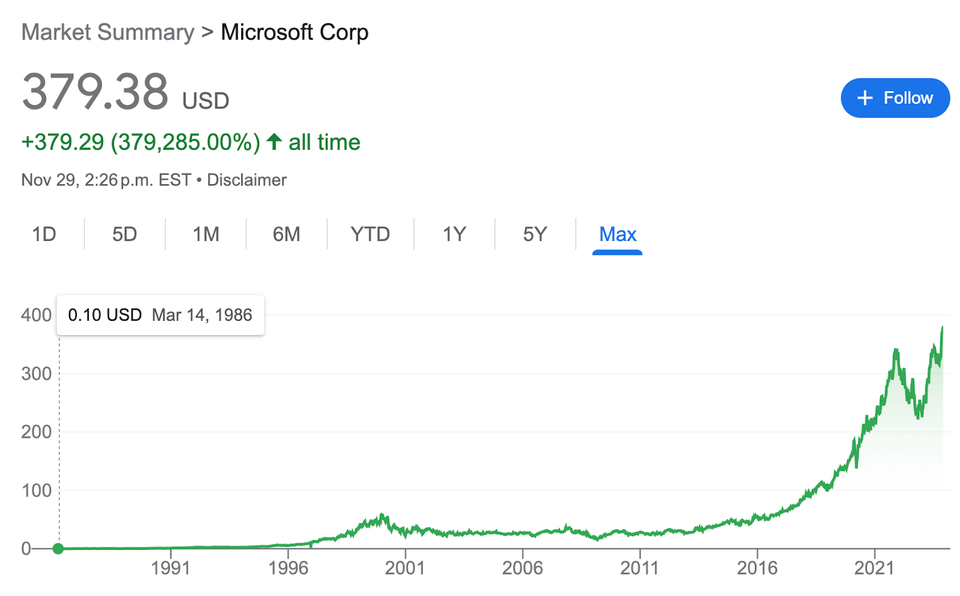
While Google has long dominated the Search market, the infusion of OpenAI’s technology into Bing’s ecosystem triggered a response from Google and other competitors. Looking to enhance their search algorithms and features further, AI integration in Search continues to push boundaries and set the stage for a more competitive landscape.
Google’s AI Chatbot: Bard Gemini
In an October 2019 algorithm update, Google introduced BERT, a natural language processing model. This brought on a new era of search comprehension by understanding the context within search queries, including subtle nuances like sarcasm and colloquial language.
Building on this technology, Google launched their AI chatbot Bard in March 2023. Instead of GPT, Bard is powered by Google’s newest language model, Palm 2 (Pathways Language Model). Designed to generate human-like responses in a dialogue, this technology has applications in chatbots, virtual assistants, and customer service.
Google would later rename its AI to Gemini and release paid versions that can be fully integrated into Google Workspace.
How to access it
The Google Bard API is available to developers, researchers, and enterprises. Generative AI models and fully managed tools, like Vertex AI, make it easier for developers to integrate this technology into their applications.
As a stand-alone platform, Bard is available to the public and offers content in more than 40 languages. If you’re in one of the 180+ countries supporting it, you can access the chatbot by visiting bard.google.com gemini.google.com.
Unfortunately for Canadians, we didn’t make the list, and there’s been no indication on when Bard might become available to us. Google has hinted at regulatory reasons for this issue along with the EU.
Much like the Bing chatbot being integrated into Bing’s search engine, it’s anticipated that Bard will be integrated into Google Search in the near future.
Bard vs. ChatGPT
The most significant difference between Bard and ChatGPT is the data source. The latter pulls from an updated dataset – but we’ll let it explain itself:

On the other hand, Bard uses real-time information pulled from the internet. This means that Bard has the advantage of current events, research, and time-sensitive information (like weather patterns or airline seat sales). ChatGPT is said to be superior for content-creation tasks.
Chatbots in Search.
Compared to search engines using keywords, AI chatbots use natural language queries for search. Like all large language models (LLMs) tasked with generative AI, responses can be prone to inaccuracies known as hallucinations. Google recently offered a solution with their “Google it” button. This allows users to fact-check responses from Google Search without leaving the Bard platform.
But what about bringing chatbots into search engines? As we saw earlier, Bing has already integrated their chatbot and is highly successful. Contrary to what was expected, websites have also seen increased traffic from Bing. AI-generated answers are still linked to relevant websites, encouraging users to continue their search on external websites.
But is the increase in Bing website visitors simply due to more users using their search engine? Will we see the same results from Google’s Bard once it’s integrated into search?
Generative AI’s impact on search engines.
Looking ahead to 2024, the trajectory of search seems promising. Anticipated advancements in AI integration, further refinement of algorithms, and a deeper understanding of user intent are poised to transform search experiences.
With generative AI integration, there’s no doubt that more users will be using these platforms. And while ChatGPT continues to dominate the public-use market, only time will tell which players dominate and which are left behind.
I don’t think Google is going anywhere, but I’m also interested in what Microsoft & Bing do next. Fourteen-year-old Carla thought MySpace and MSN Messenger would be around forever, so who knows what the tech future holds.
Bard’s impact on website traffic.
As a digital agency, one of the big questions we’re facing is what happens to websites when users can find everything they need on the results page. For most clients, organic traffic makes up the lion’s share of their website traffic. What happens if Google no longer sends users their way?
I predict that for 2024, Bard will be used in much the same way as Knowledge Graph. Users will be provided with an instant, higher-level understanding of a topic. However, with frequent inaccuracies in responses, I think most users will use it instead as a jumping-off point. They’ll continue to research using external websites, even following Bard’s current citations and sources.
Once Bard is well integrated into Google Search, I anticipate seeing decreases in organic traffic – especially for information-based websites. However, I don’t think this will decrease customers or conversions. Whether that information is being presented on your website or generated in a SERP, what’s most important is building trust for your business.
I also predict that users on your website will go further down the conversion funnel and that conversion rates will increase. Users will be closer to making a decision, whether it’s to contact you about a service or to make that purchase. And when that time comes, I predict they’ll want to go straight to you as the source.
Embracing the winds of change.
Is there uncertainty about generative AI in search? Absolutely. I think it’s safe to say the whole world is worried about AI, whether AI is replacing jobs, a lack of regulation or general intelligence surpassing our own.
While we’re not going to answer these global questions in a 2000-word blog post, Google has given us some tools and suggestions to prepare websites to thrive in an AI-search environment. One example is implementing structured data or Schema into your website code. This markup helps search engine crawlers (and chatbots) better understand and pull information from your website, making it easier for them to provide relevant answers.
Why make it easy for them?
We’ve consistently seen with search engines that the more we help streamline their crawl and provide great user experiences, the more our efforts are rewarded with high-quality website traffic.
The future promises an even more intuitive, personalized search experience. And while the winds of search are shifting, rather than battling against AI-driven currents, we’re better off harnessing them to propel us forward.
